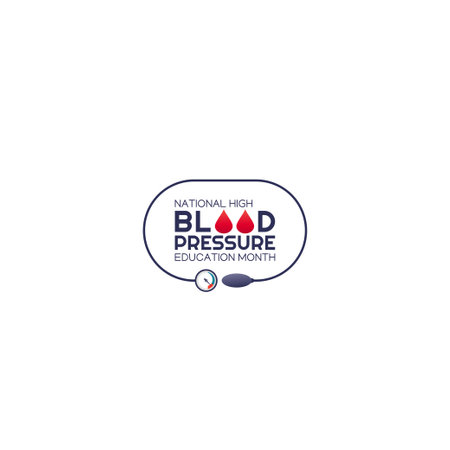The Essence of British Branding
When it comes to designing logos and colour palettes with a distinctly British twist, understanding the cultural values that shape the UK’s brand identity is crucial. British branding is often characterised by understated elegance, favouring refined simplicity over flamboyance. This subtle sophistication is woven into everything from iconic high street retailers to boutique artisanal brands. At its heart, British branding draws deeply on storytelling traditions—fostering an emotional connection by blending heritage with innovation. Whether referencing classic literature, historic landmarks, or quintessentially British humour, successful brands capture a sense of place and time, inviting audiences to become part of their narrative. The true essence lies in balancing tradition with modernity: embracing the richness of history while signalling relevance for contemporary consumers. This unique interplay gives British visual identity its recognisable charm, setting the tone for how logos and colour choices come together to create enduring brand legacies.
Inspiration from British Heritage and Icons
When crafting brand visuals that resonate with a British audience, drawing inspiration from the nation’s rich heritage and iconic symbols is essential. This approach not only celebrates local culture but also infuses your brand with authenticity and depth. By weaving together national emblems, traditional patterns, and classic motifs, designers can create visual identities that feel both timeless and uniquely British.
National Symbols as Visual Anchors
The United Kingdom boasts a wealth of instantly recognisable symbols—each offering its own story and emotional resonance. Whether it’s the Union Jack, the red telephone box, or even the humble cup of tea, these icons evoke a sense of belonging and pride. Integrating such elements into logo design or colour palettes helps brands connect on a deeper level with their audience.
Heritage Patterns and Textures
Britain’s long history in textile design provides a treasure trove of inspiration. Tartan, houndstooth, paisley, and William Morris prints each carry connotations of sophistication, craftsmanship, and tradition. Incorporating these patterns subtly within brand visuals can offer texture and context, ensuring your brand feels rooted in British heritage while remaining contemporary.
Quintessentially British Motifs
Motifs like the royal crown, double-decker buses, bowler hats, and oak leaves add character to branding. When used thoughtfully, these elements become shorthand for values such as reliability, elegance, and wit—hallmarks of British identity.
| British Element | Symbolism | Visual Application |
|---|---|---|
| Union Jack | Unity & National Pride | Logo backgrounds, accent colours |
| Tartan Pattern | Heritage & Tradition | Packaging textures, website banners |
| Crown Motif | Royalty & Prestige | Monograms, iconography |
| Cup of Tea | Comfort & Hospitality | Social media graphics, illustrations |
| Red Telephone Box | Nostalgia & Communication | Brand mascots, signage details |
By thoughtfully blending these quintessentially British influences into logos and colour palettes, brands can foster a sense of trust and familiarity while standing out in a crowded marketplace. The key lies in balancing heritage with innovation—creating visual identities that honour tradition but embrace modern sensibilities.

3. Selecting Colours with a British Palette
When designing a brand’s visual identity with a distinctly British sensibility, colour selection is far more than a matter of aesthetics—it is an opportunity to evoke national character, heritage, and subtle sophistication. Drawing inspiration from the British landscape, one finds a wealth of understated yet evocative hues: the muted greens of rolling hills in the Lake District, the cool greys and blues of coastal skies in Cornwall, and the rich, earthy browns found in centuries-old Cotswold stone cottages. These tones speak not only of nature but also of resilience and continuity—values that resonate deeply within British culture.
It is essential to consider how colours interact with quintessentially British architectural styles. For example, the deep reds of traditional London brickwork or the regal navy blue seen on doorways across Chelsea communicate both tradition and understated elegance. The inclusion of heritage-inspired tones—sage green, oxford blue, and slate grey—imbues logos and palettes with a sense of place and history, ensuring that brands feel authentically connected to their locale.
Cultural associations further enrich this process. British identity is shaped by icons such as the red of telephone boxes and postboxes, the pastel hues lining seaside promenades in Brighton, and the metallic gold accents found in royal regalia. By weaving these cultural references into branding palettes, designers create visuals that are immediately recognisable and emotionally resonant for UK audiences. Ultimately, selecting colours with a British palette is about balancing timelessness with contemporary flair—honouring heritage while inviting fresh engagement.
4. Logo Design: Time-Honoured Meets Contemporary
Crafting a truly distinctive logo for a British brand means skillfully balancing the country’s rich design heritage with contemporary flair. The fusion of time-honoured British motifs—such as heraldic elements, subtle references to royal iconography, or even the understated sophistication of classic typefaces—with innovative design principles creates logos that resonate both locally and globally. This approach allows brands to honour their roots while remaining relevant in todays fast-moving visual landscape.
The British Aesthetic: Key Features
| Traditional Elements | Modern Innovations |
|---|---|
| Serif typography, crests, shields, lions, crowns | Simplified forms, flat design, negative space |
| Rich, deep colour palettes (navy, burgundy, forest green) | Vibrant accents, gradient overlays, digital-friendly hues |
| Ornamental flourishes and detailing | Minimalism, geometric shapes, bold scaling |
Creating Standout Logos: Principles to Guide You
- Respect Heritage: Incorporate subtle nods to British history or culture without overwhelming the design.
- Pursue Simplicity: Modern logos benefit from clarity and adaptability across digital platforms.
- Add a Twist: Infuse playful or unexpected elements—a quirky British idiom or an abstract reference—to make your logo memorable.
Case Study: A Balanced Approach
Consider the evolution of iconic British institutions such as the BBC or the Royal Mail. Their logos have gradually shifted from ornate emblems to streamlined marks that still retain a sense of gravitas and national identity. By blending tradition with innovation, these brands achieve visual longevity and broad appeal.
The Social Value
A logo is more than just an identifier—it’s a statement about a brand’s values and its place in society. By drawing from Britain’s storied past while embracing forward-thinking design methods, you create visuals that inspire trust, foster recognition, and celebrate the best of both worlds.
5. Typography and Supporting Visual Elements
Typography plays a pivotal role in expressing the nuanced personality of a British brand. When selecting typefaces, it’s vital to balance tradition with legibility. Classic British fonts such as Gill Sans or Baskerville evoke a sense of heritage and sophistication, lending an air of refinement that speaks to both history and quality. These choices subtly reference the rich design traditions found across the UK, from stately signage in London’s Underground to crisp editorial layouts in national newspapers.
However, clarity and accessibility remain paramount. It’s essential that the chosen fonts are easy to read, ensuring your brand communicates effectively across digital and print platforms alike. Pairing a timeless serif for headlines with a clean sans-serif for body text can create contrast while maintaining harmony—mirroring the UK’s blend of old and new.
Supporting Visual Accents
Beyond typography, graphic accents further reinforce a distinctly British aesthetic. Think understated flourishes: subtle lines inspired by Georgian architecture, restrained crests, or even minimalist interpretations of classic British motifs like the Union Jack or iconic red telephone boxes. These elements should never overwhelm; instead, they offer gentle nods to cultural touchstones, enriching the brand story without becoming pastiche.
The Importance of Consistency
Maintaining consistency in these visual elements is crucial for building trust and recognition. Whether it’s the precise use of typographic hierarchy or the careful repetition of supporting graphics, each detail contributes to a cohesive look that feels both uniquely British and universally accessible.
Inclusive Design Principles
A truly effective British brand identity also prioritises accessibility. Ensure ample contrast between text and background colours, choose font sizes that are easy to read for all users, and test designs for compatibility with assistive technologies. By doing so, your visuals will not only celebrate British style but also embrace inclusivity—an increasingly important value in modern UK society.
6. Practical Applications and Consistency in the UK Market
When it comes to applying brand visuals in the UK, consistency is paramount—whether your brand is making its mark on the bustling high street or creating a seamless digital journey online. A British-inspired logo and colour palette are only as effective as their application across every customer touchpoint. From storefront signage in historic market towns to mobile app icons seen on London’s commuter trains, each instance must echo your brand’s unique identity and values.
Translating Visuals Across Platforms
The strength of a well-designed British brand lies in its adaptability. Your visual assets should retain their integrity whether displayed on traditional print materials, packaging, uniforms, or across digital channels like websites, social media, and e-commerce platforms. For example, a logo inspired by heritage motifs should be equally recognisable on a shopfront sign in Edinburgh as it is on an Instagram profile picture or a responsive website banner.
Cohesion Builds Trust
British consumers value reliability and authenticity. Maintaining a consistent look and feel not only builds recognition but also establishes trust with your audience. This means adhering to a strict set of brand guidelines for colours, typefaces, spacing, and imagery—ensuring that your brand always feels familiar yet fresh, whether encountered at a village fair or through a targeted online ad campaign.
A Distinctly British Appeal
To stand out in the UK market, infuse your visuals with subtle nods to British culture: think refined tones reminiscent of local landscapes, classic yet contemporary fonts, or motifs that hint at tradition without feeling outdated. This approach celebrates both modernity and heritage, resonating with local sensibilities while appealing to international audiences who admire Britain’s distinct style.
Ultimately, successful British branding isn’t just about beautiful design—it’s about ensuring every interaction reinforces your identity and values. By thoughtfully applying your visuals across all platforms with unwavering consistency and an unmistakably British twist, you create a lasting impression that elevates your brand above the rest.

